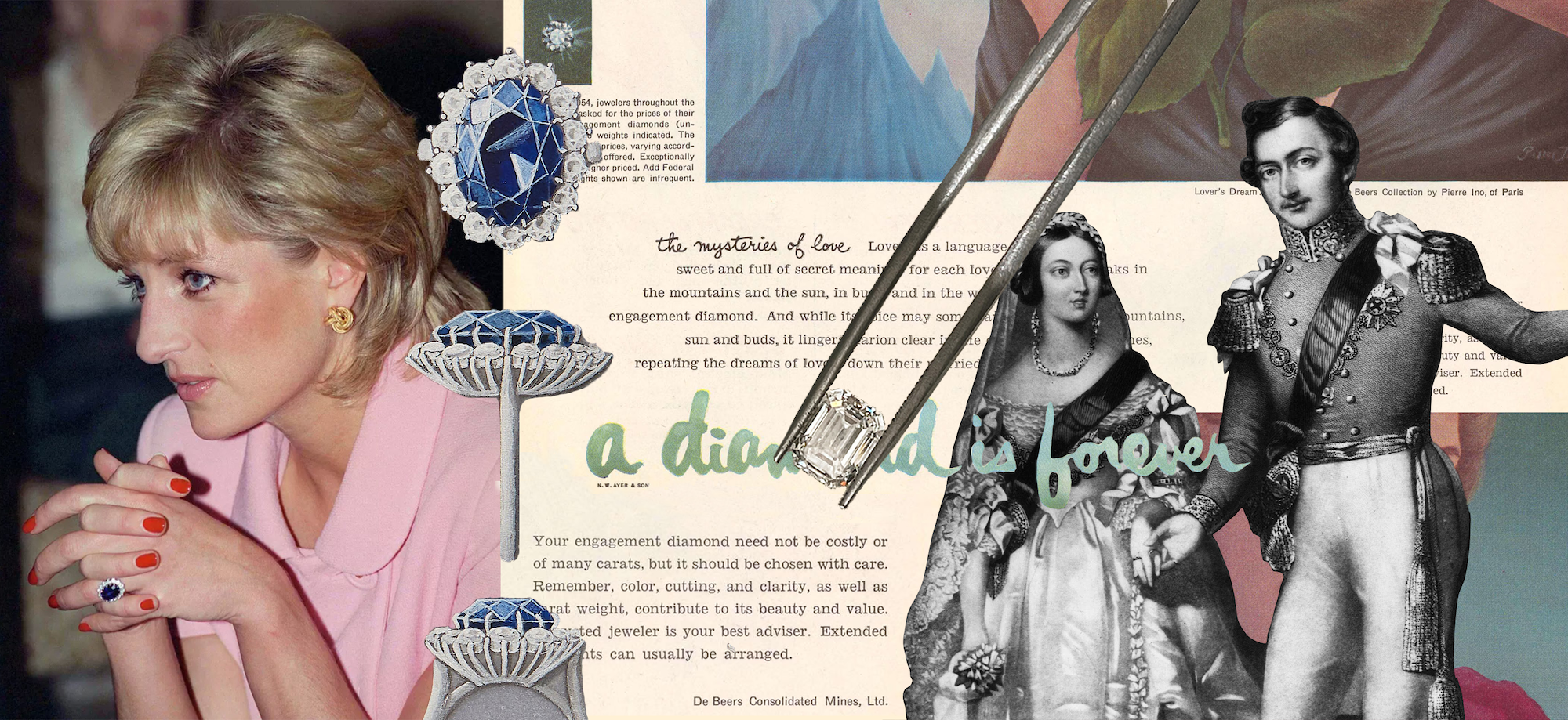A symbol of love, promise, and enduring intention.
Long before diamonds took centre stage in proposals, the engagement ring held a quieter kind of beauty—rooted not in brilliance, but in intention.
At RUUSK, where every piece is handmade to order, we are continually inspired by the stories and symbolism that shape each ring. The tradition of the engagement ring is one such story—centuries old and ever-evolving, yet still so deeply personal.

Ancient Symbols of Comittment
The earliest engagement rings date back to Ancient Egypt, where circles symbolised eternity. Woven bands made of reeds, leather, or hemp were exchanged as tokens of devotion, often worn on the fourth finger of the left hand—the “vena amoris,” believed to carry a direct line to the heart.
The Romans adopted and adapted the practice, gifting iron rings to mark a binding agreement. Gold rings emerged later, often engraved with portraits or symbols, and worn as a visible sign of a couple’s union.


Before Diamonds: A World of Gemstone Love
Long before diamonds became the go-to symbol of engagement, coloured gemstones held powerful meaning and adorned the hands of lovers and royalty alike.
-
Sapphires, symbolising wisdom, loyalty, and nobility, were often the gemstone of choice. Their deep blues represented the heavens—eternal and divine. Read more about the beauty of Australian Sapphires →
-
Rubies, with their rich red hue, spoke of passion and protection—believed to ignite the heart and protect the wearer.
-
Emeralds, beloved by Cleopatra and revered in many cultures, were symbols of rebirth, love, and fertility.

Each stone carried its own story. Each choice was intentional—selected not for status, but for sentiment.
Even in the Middle Ages, engagement rings were often simple bands engraved with poetic inscriptions. These posy rings carried messages of devotion in French or Latin, such as “vous et nul autre” — you and no other.

The Rise of the Diamond
It wasn’t until 1477 that the diamond made its formal debut, when Archduke Maximilian of Austria presented Mary of Burgundy with a gold ring set with a thin slice of diamond arranged in the shape of an “M.” Over time, this gesture sparked a trend among European aristocracy, yet diamonds remained rare and precious.

As the 1800s unfolded, the discovery of large diamond deposits made these diamonds more widely available. By the 1940s, the iconic De Beers campaign introduced the phrase “A diamond is forever,” shifting cultural expectations and firmly establishing the diamond solitaire as the engagement ring standard.
While this era brought diamonds to the forefront, it also marked a departure from the diverse stones and symbolic choices that had once defined rings of commitment. Still, there’s beauty in tradition—diamonds, with their exceptional brilliance and unmatched durability, remain a meaningful and enduring choice for many.

Meaningful Styles Through Time
Across history, engagement rings have taken many forms—each shaped by culture, era, and emotion.
-
Victorian Rings (1837–1901): Romantic and symbolic, often featuring hearts, serpents (a symbol of eternal love), or clusters of small gemstones including opals, turquoise, and garnet.
-
Art Nouveau & Edwardian Eras: Fluid, floral designs and intricate filigree, often incorporating pearls or coloured stones in whimsical, nature-inspired settings.
-
Art Deco Rings (1920s–30s): Bold, geometric, and glamorous. These rings often combined diamonds with coloured gems like onyx, sapphire, or emerald in symmetrical settings.
-
Modern Minimalist: Clean lines, ethical materials, and unconventional shapes. Today’s modern heirlooms are often custom-made, focused on personal meaning over traditional structure.
At RUUSK, we honour this tradition of meaning—creating rings not for trends, but for the stories they will hold. Some of our most beloved designs have featured Australian sapphires in hues of forest green and ocean blue, softly brushed matte gold finishes, or hand-engraved initials hidden on the inside of the band.
Because love doesn’t look the same for everyone—and neither should the rings that celebrate it.

A Return to Intention
More and more, couples are rewriting the engagement ring narrative—choosing pieces that reflect their values, their heritage, and their unique journey.
Whether it's a solid gold band with no stone at all, a sapphire chosen to reflect the ocean where you first met, or a ring handcrafted using heirloom gold—what matters most is what it means to you.
An engagement ring is more than a proposal. It's a quiet promise. A daily reminder. A symbol of choosing love, over and over again.

Considering Your Own Meaningful Ring?
Explore our Signature Styles, contact us via email or book a Studio Appointment to begin your journey.
Crafted slowly, with great love.
SHOP: RUUSK ENGAGEMENT RINGS





